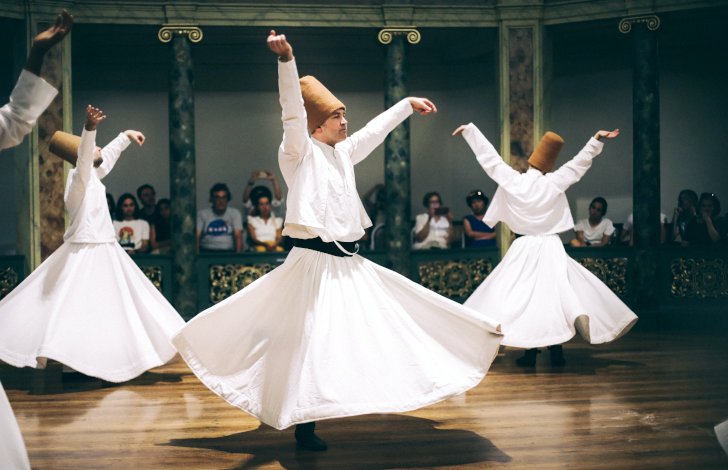Sufism is a mystical branch of Islam that focuses on asceticism, esotericism, purification, ritualism, and spirituality. Jalāl al-Dīn Muḥammad Rūmī, also known as simply Rumi or Mevlâna, is regarded as one of the greatest Persian Sufi poets. He was born in Balkh (present-day Afghanistan), but spent most of his life in Konya (present-day Turkey). It was in Konya that Rumi composed the Masnavi, an extensive mystical poem that is considered one of the most influential works of Sufism, as well as one of the most important works of Islamic literature.
Following Rumi’s death in 1273, he was buried in Konya, and his grave became a place of pilgrimage. Rumi’s followers decided to build a mausoleum over his grave and founded the Mevlevi order (Mawlawiyya) based on Rumi’s teachings. The Mevlevis are also known as the “whirling dervishes” because one of the central spiritual practices of the Mevlevi order, sema, involves spinning one’s body in repetitive circles as a form of physically active meditation.
The sema ceremony is performed as part of the dhikr, a form of Islamic prayer that involves repeated chanting of devotional prayers. It includes signing, playing musical instruments, dancing (Sufi whirling), and recitation of prayers and Sufi poetry. According to legend, the sema practice was created by Rumi himself. One day he was walking through the market and heard a prayer in the rhythm of goldbeaters’ hammers. Entranced in sudden happiness, he spread his arms and began spinning in a circle.
Although the sema is a popular form of worship in Sufism in general, the whirling dervishes of the Mevlevi order are the best-known practitioners of the sema. They perform the sema in traditional attire that consists of a sleeveless white frock, a long-sleeved jacket, a belt, and a felt cap. The ritual is led by the sheikh according to strict regulations.
After Mustafa Kemal Atatürk’s rise to power, all Sufi orders, including the Mevlevi order, were prohibited, and their lodges were converted into museums. Rumi’s mausoleum was converted into the Mevlâna Museum that officially opened in 1927. In 1954, the Mevlevi order was granted a special permission to perform sema ceremonies for tourists during two weeks each year. Today, these ceremonies are part of the annual Whirling Dervish Festival organized by the Mevlâna Museum.
The Whirling Dervish Festival takes place over ten days leading up to Rumi’s death anniversary, which is commemorated on December 17. The central event of the festival is the sema ceremony held at the museum’s Ritual Hall (semahane). It is performed by several dozen artists, including guest performers. Other events and activities held in Konya during the festival include concerts, exhibitions, symposiums, and workshops.





